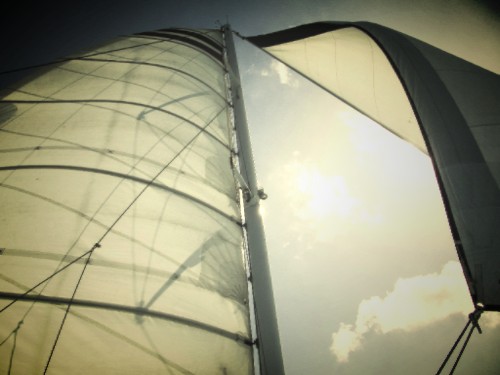

- © 2003 - 2025 Dynamix Productions, Inc. Contact Us 0



“The pessimist complains about the wind; the optimist expects it to change; the realist adjusts the sails.”
William Arthur Ward
What do the U.S. Navy and Dynamix Productions have in common? Sound on film. Well shiver me timbers mate, if that doesn't make sense to you landlubbers, then come aboard and let me explain. In 1914, American physicist Theodore (Ted) Case started experimenting with modulating light waves to transmit and record sound. He got the idea from an 1880 invention by the venerated Alexander (Al) Graham Bell called the "photophone" that transmitted speech on a light wave 700 feet. Ted's first development was a light sensitive vacuum tube that the Navy used successfully in ship-to-ship signaling during and after World War I.
After the war, Ted and his assistant Earl (Earl) Sponable applied their technology to record sound-modulated light waves onto film. They teamed with Lee (Lee) De Forest, inventor of the Audion tube (which I covered in this article), the first electrical device that could amplify a small electrical signal. Though their first venture ended in bankruptcy and bruised egos, Ted and Earl, sans Lee, regrouped in 1926 with the Fox Film Corporation and created the Movietone sound system. Movietone may be familiar to history buffs for their old newsreels that pop up in documentaries.

The Movietone sound system recorded sound-modulated light waves on the edge of the same film used to record the visuals (see above picture) –– literally "sound on film." This made news gathering especially efficient, in contrast to the competing technology of recording sound on separate phono discs. Eventually, lensless cameras were used to record optical sound synchronized along with visuals on another camera. For playback, a separate light on the projector shone through the squiggly lines down the side. The pulsing light pattern captured by the photosensitive receptor on the other side of the film reacted electrically to produce sounds.
Look at the analog waveform in the picture above. It resembles ocean waves a little, but to me looks more like digital audio waveforms. Years later, engineers figured out how to print digital audio and other information onto the film edge for playback. The picture below shows a film's edge sprocket containing several audio formats: two types of digital audio (the grainy-like patterns on the edge and between sprockets), an analog stereo track (on the right), and a time stamp for digital audio synchronization (the dashes on the extreme right). Although the majority of theaters now present movies digitally, most major films are also available as optical prints for compatibility and archival purposes. Magnetic strips are also striped down a film's edge for the soundtrack, but the optical version will probably outlast the magnetic one, which is susceptible to erasure and flaking off.
I can remember the first time I saw one of my soundtracks optically printed down the side of a film, it was pretty cool to "see" the sound. Optical soundtracks certainly don't have the fidelity of magnetic tape or digital audio, but they were state-of-the-art when first introduced and still serve an important role in preserving films for future generations. I think we should all shout out a big "Ahoy!" to Theodore Case and the U.S. Navy for their contribution to film sound.